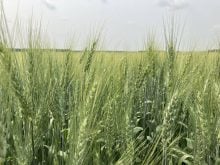Organic, natural, pesticide-free – there are many food claims out there today. To what extent are these claims meaningful? How can we be sure we are getting what we want?The Hartman group, a major analyst of consumer trends, recently completed a study to determine what consumers understand about food claims. They discovered that the terms natural and organic mean many of the same things to American consumers: without pesticides, herbicides, growth hormones, artificial ingredients, genetic modifications and antibiotics. Often consumers considered organic to be more about how the product was grown or raised, and natural to be more about what happens in processing.Is this true? Food that carries the organic logo has been certified and is produced according to organic standards that require a high degree of care for the environment and for the health of both farmer and consumer.These standards prohibit the use of synthetic pesticides, herbicides, growth hormones, genetically modified foods and antibiotics. The regulations apply to the management of the land, plants and animals. They also apply to all processing that is done to convert the plants and animals into food products.What about food that doesn’t have the logo? Farms or processing plants that are certified as organic have been inspected by a trained and independent inspector. This person reports to a certification body that issues a certificate if the inspector’s report is positive.Packaged products should include the name of the certification body. If the farmer sells without packaging, such as carrots at the farmers’ market, he or she should display a certificate at the point of sale. If they don’t, ask. If they don’t have one, they aren’t certified.How can you trust the certifiers did their job with due diligence? They also have to pass inspections that verify that their process is rigorous.What if the product isn’t certified? Then verification is up to you. If a product is locally produced, you can talk to the producer and you may be able to visit the farm.What does natural mean? According to the Canadian Food Inspection Agency, the term is often misused on labels or in advertising. CFIA states that natural should be used only if the food is not chemically altered to add anything such as vitamins or take anything away such as caffeine. They do not specify how the plant should be grown or how the animal should be raised.The natural label is used for meat, where the animal did not receive routine antibiotics or growth hormones. Generally the animal is fed cheaper conventional feed, because organic feed can be expensive. The meat is not processed with fillers or chemicals. Use of the term natural is not governed by any mandatory regulation.Pesticide-free is a phrase that was used to describe grains that were not sprayed with pesticides. It did not mean that pesticides were banned from the land before seeding or after harvest, or that the system of production itself was free from pesticides. The term has recently been used by urban groups seeking to ban cosmetic spraying of lawns.What products are free of pesticides? It would be incredibly difficult to find products that were entirely free from pesticides. Pesticides have been found in the air and in rainfall. Although organic production practices don’t add to these problems, they don’t filter the chemicals out of the rain. Some studies confirm that organic food has lower pesticide levels and eating organic foods reduces a person’s pesticide load.According to the Hartman study, people are looking for quality food that is clean, fresh, healthy, real, pure, authentic, simple, safe and local. They want it from a small scale family farm that is socially responsible, kind to animals, good to the environment and supportive of farmers. The product should also be convenient to find and prepare and not too expensive.Organic and natural are words that reassure the consumer that they are buying these desirable qualities. Getting these qualities may take a little more investigation.Brenda Frick, Ph.D., P.Ag. is the co-ordinator of organic research and extension at the University of Saskatchewan. She welcomes your comments at 306-966-4975 or via email at organic@usask.ca.
Read Also

Volatile temperatures expected for this winter
DTN is forecasting a lot of temperature variability in the Canadian Prairies this winter. Precipitation should be close to average.















